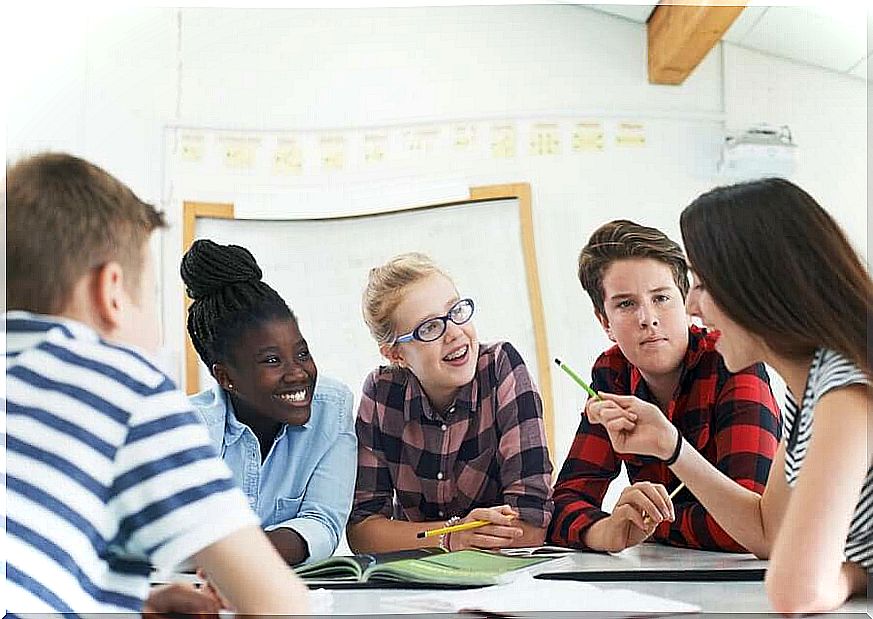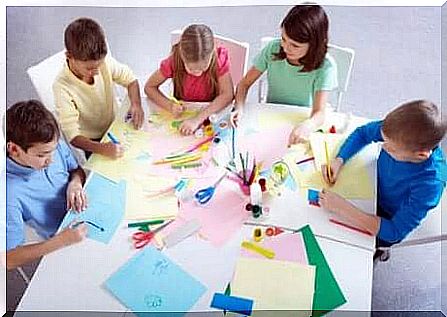Collaborative Learning In The Classroom

Today, collaborative learning in the classroom is a strategy and tool that is being implemented more and more often. This didactic strategy has a great impact on education around the world and shows that applied educational structures are starting to become obsolete.
What is collaborative learning?
To understand what collaborative learning is, it is important to know that its pillars are based on social interaction. In other words, this type of learning is based on teamwork and constant interactions between children or young people.
Collaborative learning in the classroom primarily seeks to improve the skills and abilities of each student through interaction and exchange of knowledge with their peers.
Advantages of Collaborative Learning in the Classroom
This learning modality is a fundamental method for the learning of new generations. Collaborative learning in the classroom, at any level of education, has many advantages and benefits.
Among these advantages is the fact that it is a new modality that paves the way for learning in this era. Therefore, it represents a way for students to feel motivated.
On the other hand, as mentioned above, collaborative learning has to do with collective work, that is, in groups. In this way, it is possible to learn to interact with others.
This group work makes students and students become protagonists of their learning and learn to collaborate with each other to achieve a common goal. Along the way, each person’s individual skills stand out.

In addition, collaborative learning in the classroom allows students to develop communication skills with each other. These skills will be useful not only in the educational field, but also in all areas of everyday life.
Among other advantages of applying collaborative learning in the classroom is that of promoting and developing the sense of responsibility, competence and leadership of each of the participating children or young people.
In addition, and not least, this method involves everyone in the same way, which improves students’ self-esteem and, at the same time, their independence.
How to apply collaborative learning in the classroom
How to make students feel motivated and willing to learn? What can be done to improve each other’s abilities together and make their abilities blossom? How to promote interactions within the classroom?
There are many questions regarding the education of children and young people. They all boil down to a single answer: collaborative learning. Thus, a new question arises for those who are in charge and have the role of educating students: how to apply collaborative learning in the classroom?
Fundamentally, it is the teacher who must lead the collaborative learning process. That is, although students learn through collaboration with each other, there is a need for a guide figure to guide, help and motivate them to learn.
The teacher will be responsible for promoting critical thinking in each student so that, later, in group work, each one can objectively analyze the view of their classmates.

Tips for applying collaborative learning in the classroom
Promote communication and dialogue
In the dynamics of learning, communication between students is essential. It must take place in such a way that they can express themselves freely, without fear of sharing what they think. Not only to feel comfortable in their school environment, but also to develop the necessary openness to understand divergent positions.
organize groups
As we can see, for this type of learning to be effective, it is important to organize working groups. Therefore, it is very useful that the formation of each group is similar and equitable, even though all students have different skills and abilities.
In short, collaborative learning in the classroom is critical in the era in which we live. In fact, it is a very beneficial strategy for both teachers and students. Interspersing this method with others is a good way to keep the student’s motivation intact and leave old structures behind.








